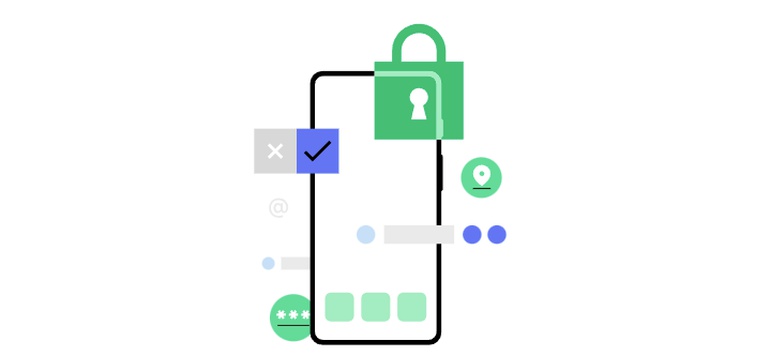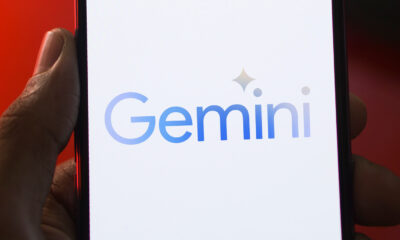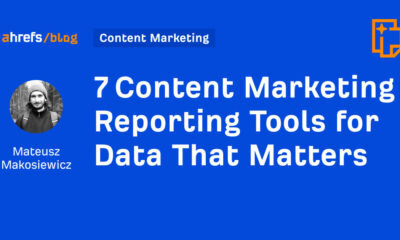SOCIAL
Google Outlines ‘Privacy Sandbox’ Initiative for Android, the Next Stage of the Data Privacy Shift

Apple’s ATT update, which now prompts users of iOS apps to opt in or out of data tracking, has caused major disruption in the digital ad space, with Meta alone estimating that the change will cost it some $10 billion this year. And now, we could be set for the next stage of that shift, with Google announcing that it’s actively developing its Privacy Sandbox for Android, which is its equivalent data privacy control for Android users.
As explained by Google:
“Today, we’re announcing a multi-year initiative to build the Privacy Sandbox on Android, with the goal of introducing new, more private advertising solutions. Specifically, these solutions will limit sharing of user data with third parties and operate without cross-app identifiers, including advertising ID.”
Google’s also developing similar data privacy controls for the web, but the Android variation will likely have a bigger impact, given the significance of the mobile advertising marketplace, and the use of personalized targeting via apps.
Though Google has said that it’s aiming to work with developers to minimize disruption – while also taking a shot at Apple’s approach:
“We realize that other platforms have taken a different approach to ads privacy, bluntly restricting existing technologies used by developers and advertisers. We believe that – without first providing a privacy-preserving alternative path – such approaches can be ineffective and lead to worse outcomes for user privacy and developer businesses.”
As part of this, Google’s been as open as it can in the development of its Privacy Sandbox initiatives, which most recently saw the introduction of ‘Topics’ as its key audience targeting replacement, rather than cookie-tracking.
“With Topics, your browser determines a handful of topics, like “Fitness” or “Travel & Transportation,” that represent your top interests for that week based on your browsing history. Topics are kept for only three weeks and old topics are deleted. Topics are selected entirely on your device without involving any external servers, including Google servers.”
That concept will also, theoretically at least, carry over to the Android version of the same, which will enable ongoing audience targeting by topic categories, as opposed to more granular, personalized reach.
In order to ensure that it builds these new tools in partnership with developers, Google has pledged to support its existing ad tools for at least two more years, while it will also provide ‘substantial notice’ ahead of any change.
That is a lot different to Apple’s approach, which basically threatened to launch its ATT update for months, and didn’t tell anyone when, exactly, it would be coming, till basically it went live. Businesses then needed to scramble to mitigate any data losses, which, as in the case of Meta, has led to significant impacts, as it works to build new tools and solutions to counter the change.
Ideally, Google’s approach will allow more time and insight to build alternative solutions, while Topics targeting will, at the least, give ad partners some insight to go on, rather than leaving them in the dark. Google has also pledged to ensure that its new systems don’t give preferential treatment to its own ad products or sites. Which is another criticism that’s been leveled at Apple, and ideally, with longer lead and development time, that will lessen any potential impacts as a result of the enhance privacy shift.
Though there will be impacts. Over 2.5 billion people around the world use Android-powered devices, significantly more than those on iOS, and if Google doesn’t get this change right, it could have a disastrous impact on the digital ads ecosystem, leading to higher costs, and lower campaign performance, across the board.
Which is probably why all brands should be considering their data sources, and how they maintain connection with their audiences, and target future customers – because as these changes come into effect, you will need to update your approach to maximize performance and optimize spend.
There’s some time to go before this becomes a major headache, but it’s worth considering your approach now, and implementing your own data collection and community building efforts to prepare.
You can read more about the development of Privacy Sandbox for Android here.
Source link
SOCIAL
Snapchat Explores New Messaging Retention Feature: A Game-Changer or Risky Move?

In a recent announcement, Snapchat revealed a groundbreaking update that challenges its traditional design ethos. The platform is experimenting with an option that allows users to defy the 24-hour auto-delete rule, a feature synonymous with Snapchat’s ephemeral messaging model.
The proposed change aims to introduce a “Never delete” option in messaging retention settings, aligning Snapchat more closely with conventional messaging apps. While this move may blur Snapchat’s distinctive selling point, Snap appears convinced of its necessity.
According to Snap, the decision stems from user feedback and a commitment to innovation based on user needs. The company aims to provide greater flexibility and control over conversations, catering to the preferences of its community.
Currently undergoing trials in select markets, the new feature empowers users to adjust retention settings on a conversation-by-conversation basis. Flexibility remains paramount, with participants able to modify settings within chats and receive in-chat notifications to ensure transparency.
Snapchat underscores that the default auto-delete feature will persist, reinforcing its design philosophy centered on ephemerality. However, with the app gaining traction as a primary messaging platform, the option offers users a means to preserve longer chat histories.
The update marks a pivotal moment for Snapchat, renowned for its disappearing message premise, especially popular among younger demographics. Retaining this focus has been pivotal to Snapchat’s identity, but the shift suggests a broader strategy aimed at diversifying its user base.
This strategy may appeal particularly to older demographics, potentially extending Snapchat’s relevance as users age. By emulating features of conventional messaging platforms, Snapchat seeks to enhance its appeal and broaden its reach.
Yet, the introduction of message retention poses questions about Snapchat’s uniqueness. While addressing user demands, the risk of diluting Snapchat’s distinctiveness looms large.
As Snapchat ventures into uncharted territory, the outcome of this experiment remains uncertain. Will message retention propel Snapchat to new heights, or will it compromise the platform’s uniqueness?
Only time will tell.
SOCIAL
Catering to specific audience boosts your business, says accountant turned coach

While it is tempting to try to appeal to a broad audience, the founder of alcohol-free coaching service Just the Tonic, Sandra Parker, believes the best thing you can do for your business is focus on your niche. Here’s how she did just that.
When running a business, reaching out to as many clients as possible can be tempting. But it also risks making your marketing “too generic,” warns Sandra Parker, the founder of Just The Tonic Coaching.
“From the very start of my business, I knew exactly who I could help and who I couldn’t,” Parker told My Biggest Lessons.
Parker struggled with alcohol dependence as a young professional. Today, her business targets high-achieving individuals who face challenges similar to those she had early in her career.
“I understand their frustrations, I understand their fears, and I understand their coping mechanisms and the stories they’re telling themselves,” Parker said. “Because of that, I’m able to market very effectively, to speak in a language that they understand, and am able to reach them.”Â
“I believe that it’s really important that you know exactly who your customer or your client is, and you target them, and you resist the temptation to make your marketing too generic to try and reach everyone,” she explained.
“If you speak specifically to your target clients, you will reach them, and I believe that’s the way that you’re going to be more successful.
Watch the video for more of Sandra Parker’s biggest lessons.
SOCIAL
Instagram Tests Live-Stream Games to Enhance Engagement

Instagram’s testing out some new options to help spice up your live-streams in the app, with some live broadcasters now able to select a game that they can play with viewers in-stream.
As you can see in these example screens, posted by Ahmed Ghanem, some creators now have the option to play either “This or That”, a question and answer prompt that you can share with your viewers, or “Trivia”, to generate more engagement within your IG live-streams.
That could be a simple way to spark more conversation and interaction, which could then lead into further engagement opportunities from your live audience.
Meta’s been exploring more ways to make live-streaming a bigger consideration for IG creators, with a view to live-streams potentially catching on with more users.
That includes the gradual expansion of its “Stars” live-stream donation program, giving more creators in more regions a means to accept donations from live-stream viewers, while back in December, Instagram also added some new options to make it easier to go live using third-party tools via desktop PCs.
Live streaming has been a major shift in China, where shopping live-streams, in particular, have led to massive opportunities for streaming platforms. They haven’t caught on in the same way in Western regions, but as TikTok and YouTube look to push live-stream adoption, there is still a chance that they will become a much bigger element in future.
Which is why IG is also trying to stay in touch, and add more ways for its creators to engage via streams. Live-stream games is another element within this, which could make this a better community-building, and potentially sales-driving option.
We’ve asked Instagram for more information on this test, and we’ll update this post if/when we hear back.
-

 WORDPRESS6 days ago
WORDPRESS6 days agoTurkish startup ikas attracts $20M for its e-commerce platform designed for small businesses
-

 PPC7 days ago
PPC7 days agoA History of Google AdWords and Google Ads: Revolutionizing Digital Advertising & Marketing Since 2000
-

 MARKETING6 days ago
MARKETING6 days agoRoundel Media Studio: What to Expect From Target’s New Self-Service Platform
-
SEARCHENGINES5 days ago
Daily Search Forum Recap: April 12, 2024
-

 SEO5 days ago
SEO5 days agoGoogle Limits News Links In California Over Proposed ‘Link Tax’ Law
-

 MARKETING7 days ago
MARKETING7 days agoUnlocking the Power of AI Transcription for Enhanced Content Marketing Strategies
-

 SEARCHENGINES6 days ago
SEARCHENGINES6 days agoGoogle Search Results Can Be Harmful & Dangerous In Some Cases
-

 SEO4 days ago
SEO4 days ago10 Paid Search & PPC Planning Best Practices















You must be logged in to post a comment Login